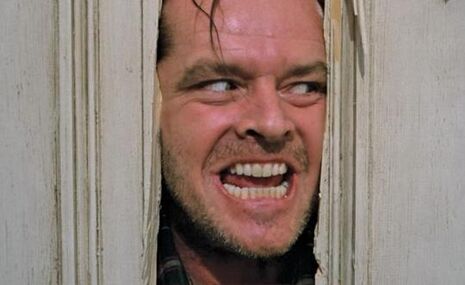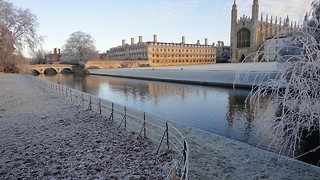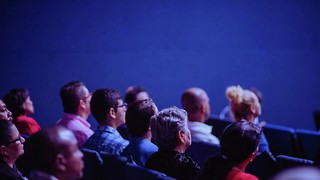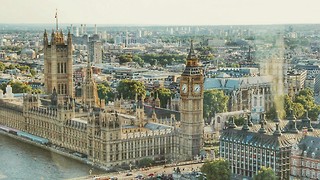Do you like scary movies?
Jessica Barnfield on why thrillers have the edge on gore when it comes to getting you to the edge of your seat

We file into the already crowded Bryant Park, picking our way past picnic blankets and cuddling couples to settle ourselves in some seats ready for the screening. As the ominous first notes ring out across the park, and the iconic opening shot of Kubrick’s 1980 masterpiece The Shining fills the screen, there are whoops and cheers from the audience. Silence falls, and the unsettling story begins.
Why is The Shining quite so terrifying? Slow and steady, its central performer Jack Nicholson paints the perfect portrait of insanity percolating below the surface. I would categorise The Shining as a thriller, rather than a horror, film despite its references to supernatural elements– the book may be a different story. What is terrifying is its resolute rooting in reality, the feeling that this could happen, indeed that is has happened, many times before. That’s what makes the thriller the only genre to turn to, if you want to be truly terrified this Halloween.
Horror movies are defined for me by showing what a thriller only implies. They delight and disgust with their gory montages of blood, guts, and monsters. The Texas Chainsaw Massacre is probably the epitome of this kind of horror flick. It revels in gore; a group of teenagers take a wrong turn and encounter a deranged family on a farm who spend the next 90 minutes attempting to hack them all to death with chainsaws. This, incidentally, could be the plot for almost any horror film ever made in America: there’s always a group of teens stuck in the woods, and there’s always a crazy guy with a knife ready to slice them to bits. (See: House of Wax, Camp Slaughter, Jeepers Creepers, Friday 13th). Unlike the steady insanity of the thriller – where the ‘bad guy’ is usually just a good guy tormented over the edge – the bad guy of the horror is monstrous, purely evil, and often laughably unrealistic.
A terrific horror-comedy that flips this genre on its head is Cabin in the Woods. Part classic teen-slasher flick, part Truman Show, every convention is subverted, making you cry with laughter in between the guts and gore. Of course, films in the horror-comedy genre all take their lead from Scream. While watching it, I like to test my horror-movie knowledge by trying to spot the clues to the killer, and particularly enjoy the classic 'Do you like scary movies?' line.
Comedic relief can also be found in Jamie Lee Curtis’ scarily seventies haircut and flares, in 1974's Halloween. This is a movie that cost approximately $0 to make and became a box-office hit grossing $70 million. Tension is built by the ominous masked figure that stalks the edge of the screen, but is constantly broken by bloody stab-fests that leave the characters as well as the audience screaming. The problem is, as soon as we’ve seen the first murder the worst is over with. No matter what happens, we know the tension will ultimately break. Far more chilling, far more haunting, is the way that thrillers refuse to allow for this cathartic release of tension.
And this is why they are infinitely more terrifying. The 1973 British-Italian classic Don’t Look Now has heavy supernatural elements, and yet it is primarily so eerie and disturbing because of the way it explores the psychology of its protagonist. Plus, the ending still makes me gape in shock no matter how many times I see it. 1995's Les Diaboliques similarly explores relationships and personal psychosis, and Henri-Georges Clouzot’s direction was so hair-raising that even the master himself, Hitchcock, took notes. It’s one of those films that leaves you looking over your shoulder, never sure who is there or who to trust.
There is one special horror genre that deserves a mention here, one that I will dub the ‘Creepy-Kid flick’. The epitome of a Creepy-Kid Flick is probably The Exorcist, but there are countless others including The Omen, Rosemary’s Baby and The Orphan. The twist at the end of The Orphan is in fact so skin-crawlingly creepy that I can barely even think about it now without shuddering. Why are children so scary? Probably because they’re supposed to be innocent and in need of protecting, so when one starts spurting green gunk from their mouth, and shouting explicit profanities about what your mother gets up to in hell it’s… unnerving to say the least.
This brings me back to why The Shining is so spectacularly creepy. It’s not the twin girls asking you to play with them forever, or the blood rushing down the hall, or even the bathtub scene (which manages to be macabre on multiple levels). It’s the big empty rooms, the tracking shots of little Danny racing around the hotel, the oppressive solitude and silence of the family’s situation; but the most sinister effect of all is the subversion of the father figure, from someone who loves and protects to someone who manically chases you around the house with an axe. Thriller movies are terrifying precisely because, in your worst and darkest nightmares, they could happen. What is more menacing than realising you never really know who to trust, or what goes on inside people’s heads?
As Kubrick’s final shot zooms in on the unnerving 1920’s photograph, I glance around the audience. As I look from person to person, eyes fixed on the screen, faces flickering in the dark, I couldn’t help but think, who needs gore, monsters, ghosts and guts to get scared? People are by far the scariest creatures of all.
 Comment / Anti-trans societies won’t make women safer14 November 2025
Comment / Anti-trans societies won’t make women safer14 November 2025 News / Controversial women’s society receives over £13,000 in donations14 November 2025
News / Controversial women’s society receives over £13,000 in donations14 November 2025 News / John’s rakes in £110k in movie moolah14 November 2025
News / John’s rakes in £110k in movie moolah14 November 2025 Fashion / You smell really boring 13 November 2025
Fashion / You smell really boring 13 November 2025 Music / Three underated evensongs you need to visit14 November 2025
Music / Three underated evensongs you need to visit14 November 2025









